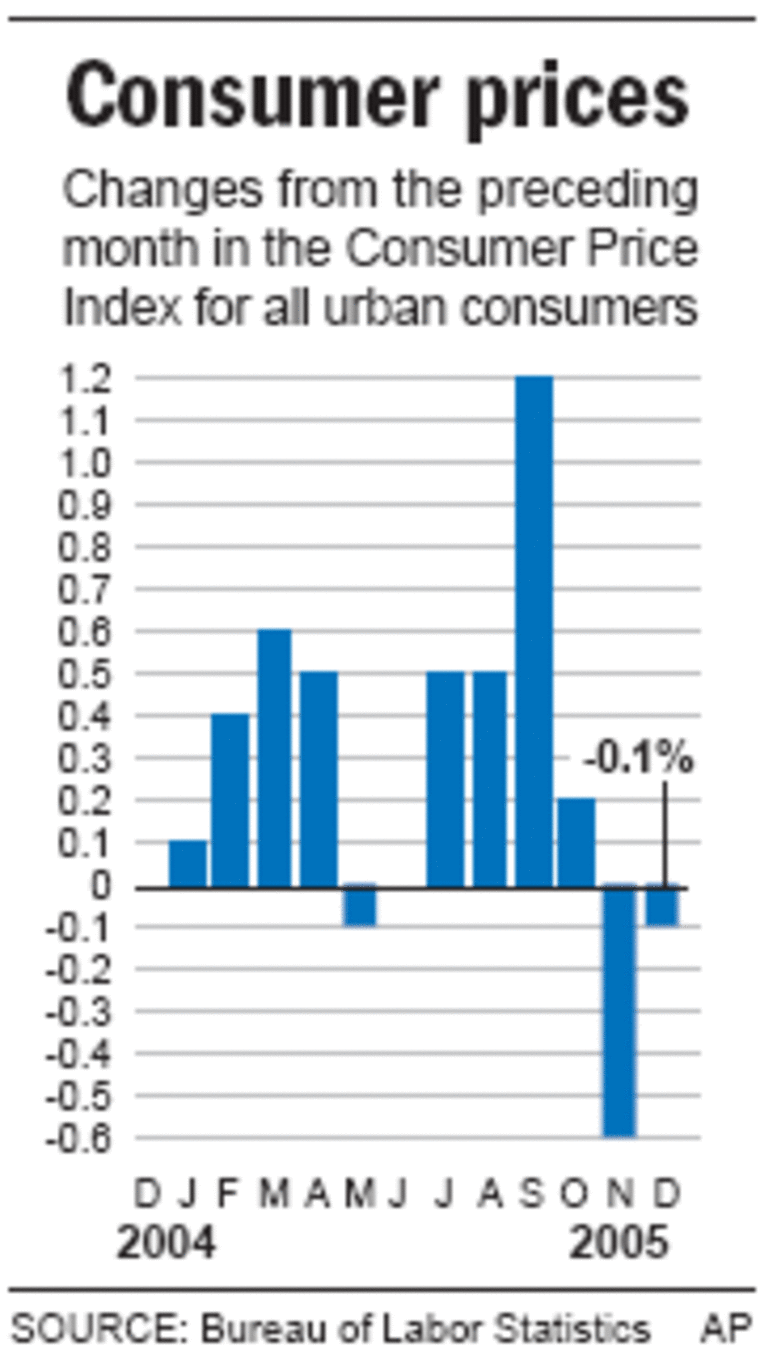A report Wednesday showed U.S. consumer prices, excluding food and energy costs, rose an expected 0.2 percent in December, although they rose by the largest amount in five years in 2005, reflecting a surge in energy costs. Other prices remained well behaved.
The Labor Department reported that its closely watched Consumer Price Index was up 3.4 percent for the 12 months ending in December, the biggest jump since a similar 3.4 percent rise in 1990, another year when global oil prices were soaring because of Middle East turmoil.
Outside of the volatile sectors of food and energy, core inflation posted a 2.2 percent rise for all of 2005, unchanged from the 2004 gain.
And in other good news, inflation ended the year on a tame note with overall prices dropping by 0.1 percent in December following an even bigger 0.6 percent decline in December. It marked the first back-to-back monthly declines in consumer prices since late 2003.

The 3.4 percent increase in consumer prices for the 12 months ending in December was up slightly from a 3.3 percent rise in 2004. It was the biggest annual gain since a similar 3.4 percent price rise in 2000, the final full year for the country’s 10-year economic expansion, the longest in U.S. history.
Both 2004 and 2005 were heavily influenced by soaring energy prices, which jumped by 17.1 percent last year and were up 16.6 percent in 2003. Both years posted the biggest increases in energy costs since 1990, a year when Iraq’s invasion of Kuwait sent tremors through global oil markets.
However, outside of energy and food, the 2.2 percent rise in core inflation matched the increase in 2004 with both years up from a tiny 1.1 percent increase in 2003, a year when the Federal Reserve cut interest rates to a 45-year low to guard against the remote possibility of deflation, a destabilizing fall in prices.
Since June 2004, the Fed has been pushing interest rates gradually higher. It is expected to boost rates for a 14th time at its Jan. 31 meeting, the final session for Federal Reserve Chairman Alan Greenspan, who is stepping down after 18½ years at the central bank.
The Fed triggered a huge stock market rally in the first week of the new year when minutes of its December discussions indicated that the central bank was getting close to the end of its credit tightening campaign.